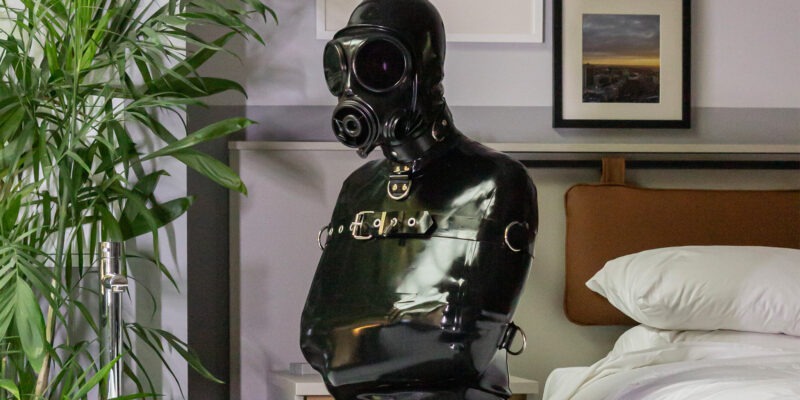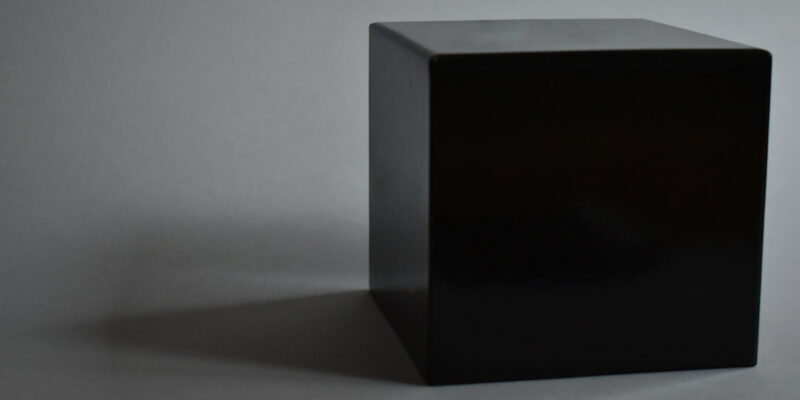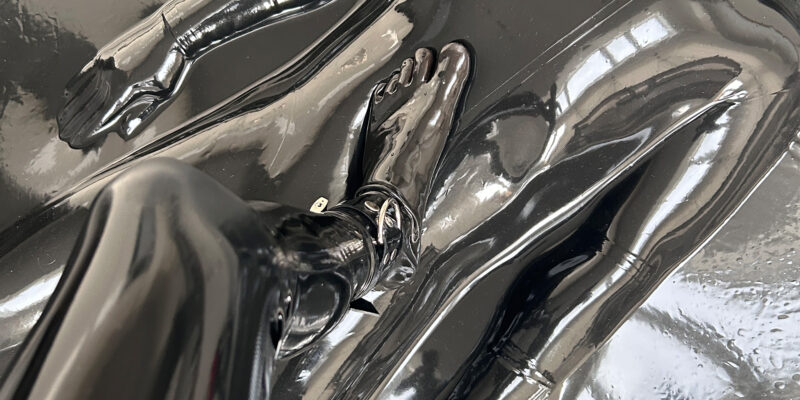“You can’t be serious! What do you mean….this is a new version of our enviro-suit? It looks like something you’d wear to a weird fetish weekend in a secluded ranch high up in the mountains. I’m not wearing something that flimsy. You’re expecting me to trust my life to a toy costume!!!!” Major Tom Yarwood was as stunned as he was emphatic.
The other crew members took a few seconds to compose their thoughts. Biologist Mitsi Lorenzo spoke next;
“You told us last month that there was a problem with our original suits, but surely that can be rectified. This doesn’t look like a legitimate answer…..I think this is a joke.”
Electronics specialist Mike Livingston could only mutter about how pressurizing in zero atmosphere would blow the suit up like a Michelin balloon man. “Seems as if we’re all looking for an explanation for this silly turn of events,” said Doctor Liz Borman.
“We know you guys are under some pressure to solve the problems, but I’m expecting people in this business to be serious about our lives….at least for as long as we’ve promised we can anticipate surviving.”
After allowing some time for each of them to vent, Commander Jackson got ready to explain. As he stood in front of what looked like a latex catsuit, he was thinking about how the same thoughts crossed his mind a month ago when Jeremy first outlined his concept. Now, after digging into the details, and understanding that this was no ordinary catsuit, he had to calm the nerves of a select crew of astronauts who seemed stunned by this change of plans.
“Dr Borman, you are correct–we do take our jobs–-and your lives–seriously. We don’t think that we’re off our rockers, and if you’ll let us explain both our thoughts and the details, I think that you’ll understand that this might be for the best. First, the agency is under serious pressure to change the mission plan to accommodate a return to Earth so that the team isn’t abandoned on Mars. That means the mission will be shorter than planned–probably six months out, six months back and about a year on the surface to do your experiments. We’re having to reconfigure everything because there won’t be time for additional resupply voyages.”
“We’re also having to address the suit problems. We mentioned last month that there were issues related to dust in the Martian atmosphere. Our tests on the original suits using dust from the Sahara and from Australia went OK, but when we engaged with the dust brought back from the moon, there was serious degradation in short order. We don’t know if the dust on Mars is significantly different from the moon’s dust, but we can’t take the chance that it’s less harmful. The joints can’t handle the abrasion for long enough to be useful, considering their cost and complexity. We won’t have the space to send a wardrobe full of extra suits for you to swap out when complications arise.”
“As a matter of fact, even the limited exposure to moon dust in our current Artemis mission plans poses a significant risk, but at least astronauts working as close to Earth as the moon have on average a ten-day resupply schedule. Mars personnel won’t be able to get additional materials and supplies the same way.”
“What you see here is, granted, a new and so far untested concept, but Jeremy will fill you in on the reasoning behind its construction, and why we think it will solve our problems. He’ll address the inflation issue, the strength and reliability issues, and explain some features. Over to you Jeremy…”
Jeremy spoke next;
“It’s true…I have a bit of a kink. But it’s that kink that got me thinking about a suit that didn’t have joints in the normal sense of the word, and that’s what we have here, so dust won’t be an issue. Yes, it looks like a catsuit, and will even fit like one, so there might be manoeuvrability benefits to it, but that’s just a bonus. What we have here is a double-layered latex suit. The inner layer will be much like any old latex garment (for any of you that might have that experience), but it’s got features never thought of before. The outer layer will be constructed with kevlar mesh for strength and durability, as well as a microfilament screen that we believe will help deflect cosmic rays and reduce the biological harm from them. The kevlar mesh means that it won’t inflate the way Mr Livingston envisioned.”
“There will be several fittings on the outside, and most of them will go right through to the inner suit. The first of course, is air supply. Another is for drinking water. A third for rinse water, with drains at the feet. There will also be heating and cooling air, which performs an essential function related to the rinsing I mentioned. And, as you all can appreciate, ports for bodily functions.”
“What do you mean…ports for bodily functions? We train to hold things till we get out of the suits” challenges Mike.
It was time for Commander Jackson to take over to outline some of the delicate matters not clearly addressed so far.
“Mike…all of you. This is a different kind of suit….it’s a permanent suit. We’re designing it to wear throughout the mission.”
Stunned silence…..and then a clamour of voices.
“What do you mean permanent! I don’t even wear the same underwear two days in a row! Major Yarwood, piped up.
Dr Borman jumps in with: “Unsanitary and inhuman. I won’t go on this mission, despite the years of preparation.”
“Forget the experiments,” says Mitzi, “we’re going to be the experiment!”
Commander Jackson resumes: “I know this is a shock. I was perturbed by the concept when Jeremy brought it to me a while back, but I’ve had them make one up for me, and it’s actually quite effective.”
“But you haven’t worn it like we’ll have to wear it…” was the snarky response from Mike.
“No, I haven’t–and won’t, but we’d like you to give it some consideration before dismissing it outright. Actually, we’re making some up for the Artemis astronauts, so they’ll get to test out the concept before we have to strap you in for launch,” announced Commander Jackson. “ And Jeremy has some more details I’d like him to outline for you. Jeremy…”
A little less nonchalant than previously, Jeremy resumes his explanation.
“I mentioned rinse before, and that should address the hygiene issue: there will be options to engage a flow of cleansing fluid from the head down and throughout the suit daily, and the drains in the feet will draw off the fluid. Your body will then be dried by the heat/cooling air. The fluid will contain materials to inhibit hair growth and skin sloughing. We’re also having a pharmaceutical company work on an ingestible product to assist in that control issue.”
“Do you mean we’re going to be bald and hairless?
“Well, not quite, but our biologic consultants indicate that the less, the better” answers Jeremy. “And it’s for your comfort, too. And once the treatment ceases, things will grow back normally, we think.”
Sensing that some contemplation time is in order, Commander Jackson says;
“I know this is a shock, and it might take some time to come to terms with it, but you four were chosen as a group quite capable of working together as a team in a dangerous and stressful environment, so this curve shouldn’t cause a breakdown in our plans. Take some time to talk to Jeremy and the production team, examine the suits carefully, talk amongst yourselves, and we’ll meet again same time here in one week.’‘
CHAPTER 2
“Government agencies were under a lot of pressure to change plans for the Mars mission and not make it a one-way ticket to oblivion. Sure, some hero-types seemed willing to carry mankind’s flag to another planet with little to no chance of return. They initially announced plans to set them up in a base that could grow food and recycle water, but it was recognized that surviving long enough to grow successful food crops and conduct the experiments needed to prove the viability of a permanent outpost on Mars was at best a three to five-year expedition.
If resupply shipments within that time frame could include a landing vehicle that could return to at least a moon orbit, then the pressure would ease a bit. An alternate plan could see a full-fledged round-trip mission. It wouldn’t be able to take the volume of supplies to sustain the mission long enough for all the groundwork and experiments to be completed, but at least astronauts and technicians wouldn’t be abandoning to a planned death on Mars.
The week following the raucous introduction to the new enviro-suits was a busy one for the crew. Due to their initial shock, there was plenty of curiosity to be fed and enough technical questions that most of the crew were in Jeremy’s suit-development lab, which he had labelled “The Closet”, several times during the week. They saw and had the second-generation suits being created for the Artemis crew demonstrated by some of the Artemis astronauts.
What a surprise to learn that this plan had been secretly in the works for long enough that lessons learned in a first issue were being addressed with a second version. Not only that but the plan for these suits had been kept secret from the Mars crew until the pressure to revise plans and change course to make their mission a return trip as well was solidified. The lunar crew had always trained in a different complex because their work assignments would be substantially different than the Mars astronauts, but with both crews interacting at The Closet, Commander Jackson’s hopes for a softening of opinions were being proven insightful.
The interaction of two different crews became an opportunity to differentiate them by way of nicknames, so the lunar crew was tagged as “silverrock” and the Mars crew was named “03–04″ because of its mission to go from the third planet to the fourth. Casually, they decided that if the new plans stayed viable for a return to earth, at that time the mission name would become “04–03″. There was still a bit of animosity that the silverrock crew had kept the suit planning secret from 03–04, but because it was based on the earlier one-way-trip planning, that tension eased over time.
From the earliest conceptualization of the new suits, a fetish streak of one of the lunar crew members had been exposed, and he had welcomed Jeremy’s intriguing concept. His enthusiasm had generated some thoughtful reconsideration among some of the Mars crew members, but the full implications of what was being proposed still left questions. And it was a bit of a shock to enter the lab and find some of the technicians working on producing the suits dressed in latex—encouraged by Jeremy and management to ensure that any revelations from working in similar garments might produce ideas for further improvements.
These second-generation suits were developed using some body measurements that hadn’t previously been recorded for the Mars crew, so each had to schedule a private extra measuring session before the week was out. When it came time to measure for bodily functions fittings, the resistance and confusion arose again, so it was a good thing that the crew would be meeting with Commander Jackson in just a week. Jeremy let it slip that Jackson wanted 03–04 to do some training missions with silverrock, all of them dressed similarly, to become accustomed to the suits and work out the issues of both attitude and technical complexities. When all 8 had similar suits the indoctrination would continue.
Up to this point, the silverrock suits had helmets with a lock-on design. Also all the suits had a dry-suit sort of zipper to close the body while dressing, which also puzzled the 03–04 crew, because of the apparent dust damage issue. Questions to Jeremy about these details were deflected to Commander Jackson’s next briefing, because “details were still being worked out”. This seemed suspicious to the 03–04 crew, who were still somewhat hesitant and unsure of what the total proposal meant. Mutterings by Mike Livingston included comments about setting them up for a secret film studio where they would act out their astronaut roles for the world. He was remembering the accusations from some sceptics who viewed the 1969 lunar mission visuals as being staged, with no actual men “on the real moon”.
Mitsi Lorenzo was more flexible in her thinking that the concept had merit, but she didn’t understand how it would all come together as a ‘permanent’ suit as Jackson had announced. Being told that suits for 03–04 would be ready late the week of Jackson’s next briefing left them all stressed with anticipation.
CHAPTER 3
Commander Jackson was in the room before the 03–04 crew filed in. There were no props, no exhibits, and no other personnel. He began as soon as all four had found a seat. “I hear that you spent quite a bit of time in Jeremy’s lab. I view that as a good sign that you have seriously considered our change of plans, and like the idea that we might be able to return you to earth after a productive mission. Of course, you were each chosen as being single, healthy, intelligent, resourceful and unattached, based on the original plans. We don’t think that any of those attributes will be any less valuable with our new concept. Actually, they may be even more needed, because the medical and sociological nature of what we will be asking of you with this new direction could provide mankind with an understanding of how to prepare for even longer space adventures.
You’ve been advised that we want you to have suits just like the Artemis crew so that you can familiarize yourselves with them and provide feedback to make your mission outfits the best they can be. Your cooperation and feedback while performing joint missions with Artemis will be essential, even if you don’t come to grips with the concerns you’ve expressed and decide to bow out. However, I should warn you that in less than a month we’ll need your answers so that we can replace anyone not sticking with it.
Major Yarwood jumped in with the first question: “You told us that dust was the main reason for switching to this new suit, but it still has a zipper and a helmet collar lock, so it seems like those will still be danger points”.
“That’s true,” said Jackson, “but the final version of the suit will have non-operative seals, which is why I called them permanent last week. That’s also why your extra measurement sessions included bodily function details….you won’t be needing to get out of the mission suits–just the practise suits.”
“Whoa…what…I heard you say permanent last week, but I guess I wasn’t thinking of the implications of that” offered an obviously confused Mike Livingston.
Reminding them of what Jeremy said last week about a cleaning solution wash, Jackson continued: “ Our current plan, together with what we learn while you practise with Artemis, is that your entire mission will be accomplished with a single wearing of your suit. It will come off when you’re back at a lunar base or here on Earth. It sounds crazy, and that’s why I mentioned the medical and sociological nature of our study of the impacts of this concept. It limits the amount of space in the capsule needed for suits, it eliminates the potential for dust damage, it prevents wear and tear of regular entry and exit, and it gives you more dexterity and flexibility throughout your mission. The one thing that we can’t anticipate is medical crisis situations. Dr Borman is still going to be a medical specialist, and an extra suit will be available if a medical intervention is required, but you were all chosen as healthy individuals, so we hope that won’t be necessary. Repair supplies will also be available in case of damage to a suit, but that’s still far less problematic than sending a room full of extra regular suits.
“OK…I had a feeling this was the overall proposal, but we didn’t sign up to be guinea pigs. Are you sure this is the best way….or the only way…for this mission to proceed?” asks Dr Borman.
“On the contrary, Doctor. You know that whatever mission is underway, monitoring is extensive. We haven’t felt like this sort of concept was required in the past because our testing did not uncover the dust issues, but now that we are addressing that with this new plan, we think that it has major benefits for many projects in the future. Something that hasn’t come up till now, but I’ll lay it on the table. If you remember back to early in your selection period, you were told that sexual interaction was forbidden, even with a mixed crew, because the mission couldn’t handle what we called ACCIDENTS. I trust that you would have adhered to that commitment, but with this plan adjustment, we eliminate that possibility. However, we can still provide some suit enhancements that mean you won’t be deprived of all human experiences. That’s another advantage of this material”
Mike Livingston jumps into the conversation: “Holy crap! Did I just hear what I thought I heard? You’re offering sexual pleasure features in our suits? THE GOVERNMENT is offering astronauts sexual pleasure devices????? Maybe this won’t be a mission of hell!”
Smirks and hints of smiles among the crew gave Commander Jackson a bit of relief. Once in the suits, he thought, things would turn the corner.





Interesting stories